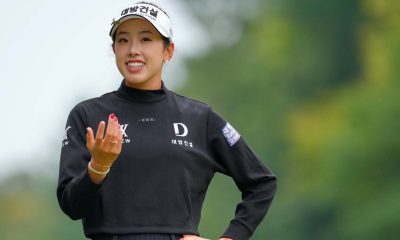Sport
“AI Instruction Tries Fixing My Golf Swing.” Golf Lord Revealed
“AI Instruction Tries Fixing My Golf Swing.” Golf Lord Revealed
My golf game has experienced a power outage the past three years. For the life of me, I cannot figure out why I’ve lost roughly 25 yards off my tee shots and 10 off my irons. I don’t feel like anything has changed – except my age and perhaps some flexibility. The ball still goes straight for the most part, with the slight draw I’ve perfected over the decades. But buddies who never did before are starting to outdrive me. I suspect the culprit is something on my downswing – either upper body rotation, head movement, or fast hands. Friends who know my swing have looked and cannot detect anything different. So I decided to enlist a little technology to help out.
Enter Mustard Golf, a brand-new golf swing analysis app that’s currently available only on the Apple app store. Mustard originally launched as a baseball app two years ago, the brainchild of renowned pitching coach Tom House. PGA TOUR pro Justin Rose was an early investor, among other high-profile athletes. The golf app integrates AI to analyze your golf swing and give specific instruction based on your unique needs. You just shoot a down-the-line video (or import an existing video) and the app will analyze it, give you a report card, and offer drills to address your most glaring issues – prioritizing them for you.
I don’t get to the driving range very often, however I do hit golf wiffle balls in my front yard several times a week – a practice that helps my game immensely. Thankfully, this app can analyze my swing while I do that. Plus I was able to try it at a real driving range, with consistent results.
Essentially, I just set the phone up behind my swing and rest it against a little planter pot. Then I turned on the camera and swung away. There are a couple of oddities here. First is that when you turn on the camera within the app, it is the rear camera that comes up. Not sure why the front camera doesn’t default, as that’s the one you need to use in the app so you can see if your swing is framed in the viewfinder and being captured. Secondly, you can take as many swings per “take” as you want, but the app is only basing its analysis on your first swing. And because the more swings you take, the longer the app takes to analyze, you’re smart in just turning off the camera between swings – something I find laborious. And then there is that analysis time – it takes a good minute or two for the app to analyze your swing, give a report card and rating, and devise a game plan for you. Maybe I’m impatient, but it just works more slowly than I anticipated.
That said, the app shows you back your swing, with dots overlaying key body points – each shoulder, elbow, hip, knee and ankle – and also traces your backswing and downswing. Then it provides analysis from those data points. Then it gives you “personalized” and insightful teaching video tips from teaching pro Mark Blackburn, through its library of 450 videos. That will soon expand to video instruction from Rose and throngs of other pros, and a much larger library, according to officials. And the videos you see are part of a report card and game plan to help get your swing on track.
In my experience, it was very enlightening. I thought the feedback accurately pinpointed my swing flaws, of which there are many. And it validated my suspicions that my hip rotation is likely a major reason for my distance loss. So I vow to follow the app’s plan to get back on track.












